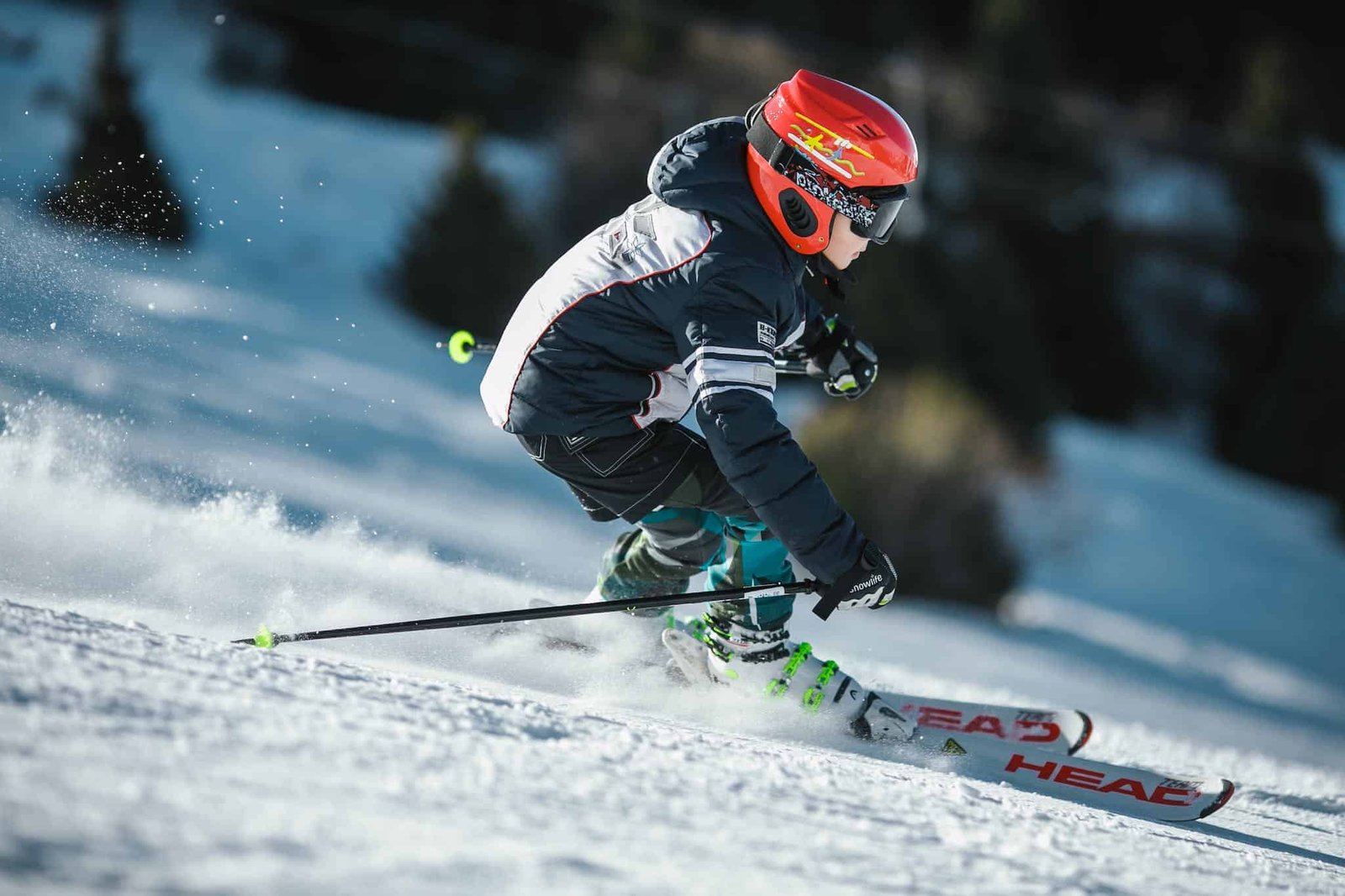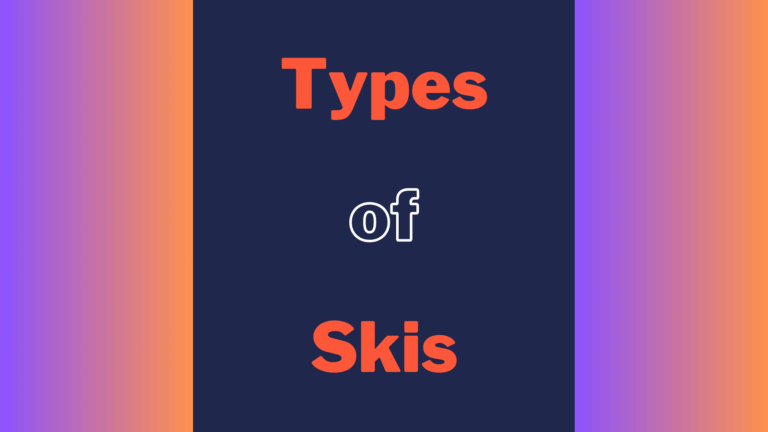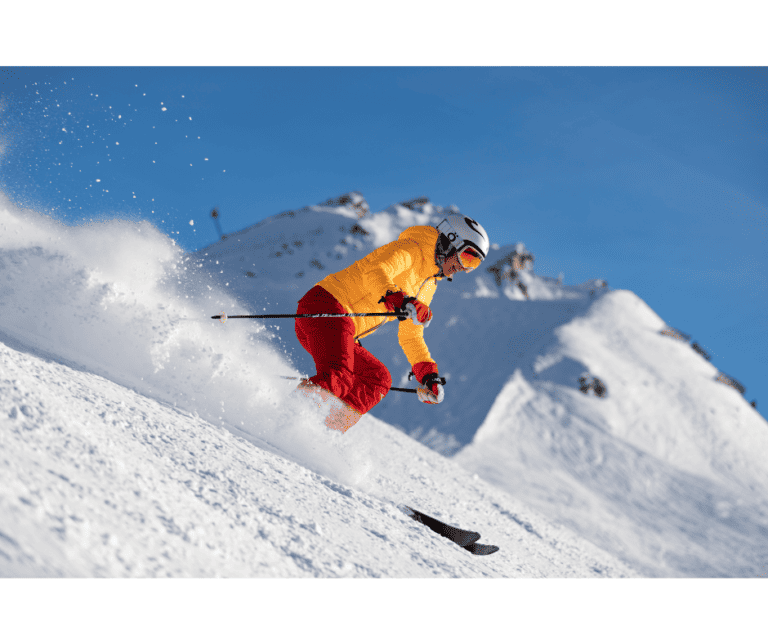How To Stop On Skis: 4 Primary Techniques

Learning how to stop properly on skis is a fundamental skill that every newcomer to the slopes must master. From beginner wedge techniques to advanced hockey stops, this article will provide key tips on how to stop on skis confidently in various snow conditions and terrain.
With step-by-step instructions on executing pivots and edge digs, plus common mistakes to avoid, you will gain the knowledge needed to improve this important ability. Mastering these techniques reduces the risk of falls or collisions while allowing you to comfortably enjoy the mountain.
However, if you are a complete beginner, I would advise you to take a ski lesson from a professional ski instructor first. Use this guide just as an introduction to the concept and to give you an idea of how it is on the slope.
Key Takeaways
How To Stop On Skis?
Key Beginner Techniques
Learning proper ski-stopping techniques is crucial for safety and fun on the slopes. As a beginner, focus on mastering these two key methods:
1. The Snow Plow (or “Wedge”)
The easiest way to stop initially is by using the “snow plow” technique, also referred to as the “wedge”. This involves pointing your ski tips close together while spreading your tails out and pressing on the inside edges. The friction created slows and eventually stops your momentum.
Begin in a pizza shape with tips close and tails wide. Gradually increase pressure to the inside edge of each ski to dig into the snow. Keep hips centered over the skis and knees bent to maintain balance. The plow allows beginners to maintain control on steeper hills and stop with ease once the speed decreases. Practice first on gentle beginner terrain.
Tips For Implementing the Snow Plow
Here’s a demonstration video from the Inspirational Skiing YouTube page. For more tips and guides, you should check out their YouTube page.
2. The Side Step
As you become stronger, the “side step” teaches how to fully stop going straight downhill. Carefully turn both feet and skis perpendicular to the fall line so you form a wall to brake speed. Push both ski edges hard into the snow with legs staggered, one slightly ahead of the other. Keep your balance over the downhill ski while increasing pressure. Changing the weighted ski while stepping up the hill further slows the descent. Once fully stopped, return the skis to a parallel position pointing downhill.
Tips For Implementing the Side Step
Intermediate Technique
3. Squat Stopping
After feeling comfortable on greens, use blue runs to start developing advanced stopping skills. The squat stop allows stronger engagement of leg muscles to forcefully dig in ski edges, spraying up snow like skidding to a halt. Approaching your stopping point, widen your stance for greater stability. Push hips back while keeping chest forward, loading increased pressure on the edges and using muscular legs to handle the impact. This stops forward momentum rapidly on steep slopes but requires fitness to prevent falling backward upon completion.
Tips For Implementing the Squat Stopping
The squat stop engages your powerful leg muscles to hammer ski edges into the snow for abrupt halts. Following these guidelines will help you safely integrate this advanced move into your downhill skillset. Start gradually and keep your knees bent to maximize stability on steep pitches.
If you want to advance your level, read intermediate ski tips for additional insights.
Advanced Technique
4. Hockey Stop
For experts, the “hockey stop” provides maximum velocity deduction using a single ski to violently carve laterally across the hill. Pick either your dominant or uphill ski to act as the pivot while lifting the opposite tail off the snow. Drive all weight onto the stopping ski to maximize edge grip while swinging it aggressively perpendicular across the fall line. Rapidly rotate shoulders and hips into the turn while the free foot follows the direction change. Execute fast to shave speed quickly before resuming control over now slowed skis. High technical skill is required or unsafe falls risk occurring.
Tips For Implementing the Hockey Stop
Other Stopping Tips

Utilizing ski brakes provides another easy way to stop gently without innate muscle exertion. Integrated bindings at both ski ends contain mobile arms with rubber pads that independently deploy downward at heel release. Dragging against the snow applies constant resistance to forward impulsion. Simply trigger the brakes and glide hands-free to a gradual stop. Keep weight slightly back during braking action to prevent tumbling forward. These work well when fatigued and anxious to rest the leg muscles. They also enable first-time students an achievable way to practice stopping unaided. However, ski brakes only slow rather than stop instantly.
Remember to always employ safe stopping etiquette around others on the mountain. Scope surroundings well ahead to identify upcoming intersections or merge zones. Manage speed in advance and slow gradually to avoid startling those downhill. Announce loudly before passing to alert oblivious sliders. If entering run merges, take turns integrating smoothly while under control. Never blast suddenly past slow beginners as the surprise could cause collisions and injury.
Implementing these methods safely takes patience and practice. Enroll in a ski school lesson to receive feedback from a certified instructor. They can provide drills, troubleshoot issues, and ensure you learn correctly. Start gradually on beginner terrain and only advance once each technique becomes second nature from repetitive quality reps. Perfect the form before attempting at high speeds or tricky slope conditions.
Don’t Use Ski Poles To Stop

While ski poles are important tools for balance and propulsion, relying on them to stop is dangerous and ineffective for several reasons:
Not Enough Friction: Pole baskets have a smooth, thin edge that hardly makes contact with the snow. This does not produce enough traction or drag to reduce motion. You’ll just keep coasting and ineffectively stab at the snow.
Pole Risk: You run the risk of hurting your shoulders from the leverage force when you try to brace pole handles perpendicular to the hill. If you jam the poles sideways, you run the risk of losing control since you’ll get stuck in an awkward position. Ugly falls may result from this.
Lack of Edge Control: Poles don’t really engage an edge for leverage; they just make contact with the snow. Learning to transmit weight onto steel edges is necessary for stopping. Without edging, poles are useless tools that can’t affect how you descend.
No Proper Stability – Almost no stopping stability is provided by two little pole baskets supported at arm’s length above your center of mass. If you do this, you will probably fall out of the unnatural body position.
While great for padding falls or making turns, relying on pole plants alone for braking? You’re gonna have a bad time! Learn proper weight-loaded edge control with wedge and parallel techniques instead of actually stopping safely. Poles should propel, not brake!






